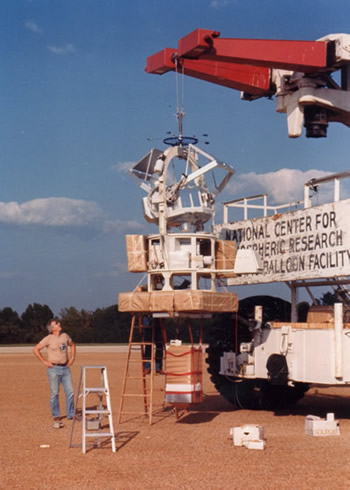Professor and Chair, Department of Physics
Professor, Institute for the Study of Earth, Oceans and Space
High energy astrophysics (X-ray, gamma-ray and cosmic-ray astronomy) offers an insight into some of the most energetic processes that take place in the universe. Through the development and use of a series of balloon-borne and space-borne experiments, my research attempts to explore some of these phenomena.
For my thesis research (at UNH), I worked on the development of a balloon-borne gamma-ray telescope. After completing my PhD in 1987, I spent the next two years as a postdoc at the Max Planck Institute for Extraterrestrial Physics near Munich, Germany, after which I returned to UNH. The focus of my early post-graduate research was the Compton Telescope experiment (COMPTEL) on NASA's Compton Gamma-Ray Observatory (CGRO). Launched by the Space Shuttle Atlantis in April of 1991, CGRO remained in orbit until it was de-orbited by NASA in June of 2000. My scientific studies with CGRO focused on research involving the accretion of matter onto compact objects (such as neutron stars and black holes), along with studies of high energy radiations from solar flares. Over the years, I have continued my research in high energy phenomena using data from several different satellite missions, including ROSAT, INTEGRAL, RHESSI, and Fermi.
In addition to analyzing data from numerous satellite missions, I have continued to be active in the development of new detector technologies for high energy missions. I have been especially interested in the development of technologies for studying X-ray and gamma-ray polarization from astrophysical sources. Studies of polarization from high energy sources should provide information on the geometry of the particle acceleration process and shed some light on the precise nature of the acceleration mechanism. The culmination of these efforts is a balloon experiment that we refer to as GRAPE. The first flight of the GRAPE payload is scheduled for the fall of 2011. The scientific goals of GRAPE include studies of pulsars, gamma-ray bursts and solar flares.
Other experimental efforts have included work with solid state gamma-ray detectors (such as CdZnTe), new scintillator technologies for gamma-ray detection (such as Lanthanum Bromide and Lanthanum Chloride) and various types of neutron detectors. Although the motivation for these developments is the study of astrophysical sources, several of these technologies may also have more practical applications. Our solid state gamma-ray detectors, for example, might be useful in several types of medical imaging applications. Our neutron telescope promises to be a useful tool for studying atmospheric radiations that adversely impact computers and other electrical equipment, particularly at high altitudes. They may also be useful as a monitor for nuclear waste management and for homeland security applications. As part of our research, we are exploring these other areas where our newly-developed technologies may prove valuable.
All of this research maintains a very active student involvement.Students play an integral part in all aspects of our work. This includes not only graduate students, but also undergraduate students.

